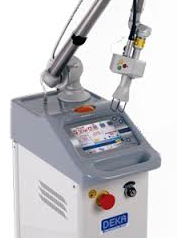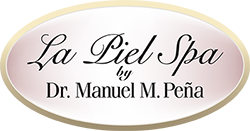 The gold standard in the industry for non-surgical facial rejuvenation, removal of wrinkles, lines, pigmentation, age spots and general sun damage has been the fractional CO2 laser since the mid 1990s. The traditional fractional CO2 laser was very effective, however it fell out of favor because it required general anesthesia. It also had a prolonged recovery time.
The gold standard in the industry for non-surgical facial rejuvenation, removal of wrinkles, lines, pigmentation, age spots and general sun damage has been the fractional CO2 laser since the mid 1990s. The traditional fractional CO2 laser was very effective, however it fell out of favor because it required general anesthesia. It also had a prolonged recovery time.
Over the last several years, advances in technology known as fractional resurfacing has made the factional CO2 laser popular again. Fractional resurfacing fractionates the laser beams into small beams, drilling tiny microscopic zones throughout the skin. In the case of the SmartXide Dot™ laser, it makes small columns known as Dots within the skin. Between these microscopic zones, there exists intact skin that was not affected by the laser. These untreated areas allow for faster recovery and healing compared to the traditional fractional CO2 laser. This means that patients can return back to work in a matter of a few days as opposed to weeks. In addition, the fractional technology makes the fractional CO2 laser a lot safer as well.
FAQ’s:
What is SmartXide DOT™ Therapy?
The term “DOT” stands for Dermal Optical Thermolysis. It is the newest state of the art procedure for fractional CO2 laser skin resurfacing. SmartXide DOT™ state of the art technology that provides flexibility, precision, and efficacy in the world of skin rejuvenation and ablative skin resurfacing.
What areas and skin indications can the DOT Therapy treat?
SmartXide DOT™ Therapy can be used for fractional CO2 resurfacing on the face, neck, décolleté, arms, hands, and legs. It effectively treats sun damage, wrinkles, acne scars, skin laxity, rhytids, and dyschromia. DOT Therapy can also be used for 3rd degree burn revisions and fractional lifts of the eye lids, neck, chest, and other treatment areas.
What is the difference between traditional and fractional skin resurfacing?
With traditional skin resurfacing, the laser emission is evenly distributed deep down in the tissue. The treatment usually requires one session followed by careful, long-term post-treatment management. With fractional skin resurfacing, repeated, shallower laser action makes it possible to achieve excellent results in only one to three sessions. Since the healthy surrounding tissues are protected, post-op recovery is shorter and simpler.
What makes the SmartXide DOT™ Therapy different from other fractional CO2 technologies?
The SmartXide DOT™ laser is unique because it enables the treating physician to selectively control the spacing or pitch of the DOTs and hence treat small, specific areas, including areas around the eyes and mouth. Furthermore, the SmartXide DOT™ is able to “fractionate” the laser energy over a customized pattern of micron-sized dots and to maximize the area that is selectively left untreated. The selectively untreated tissue promotes a faster healing time.
Does the DOT Therapy laser treatment hurt?
Most people experience a slight burning sensation. To better prepare for the treatment, our physician will apply a numbing cream to the treated area. The cream is left on the skin for about an hour.
What should I expect after the treatment?
The majority of patients will experience redness and dryness and some even a small amount of edema/swelling in the skin which settles in within 2 days. The amount of down time for each patient depends on the degree of intensity of each treatment. The application of a SPF 30 or higher as well as skin moisturizer is important for the first 5-7 days as the skin will be dry and photo sensitive.
How many treatments are needed to achieve great results?
For many patients excellent results are achieved in a single treatment session. However, patients with severe acne scarring or deep wrinkles may need two to three sessions spaced one month apart.
